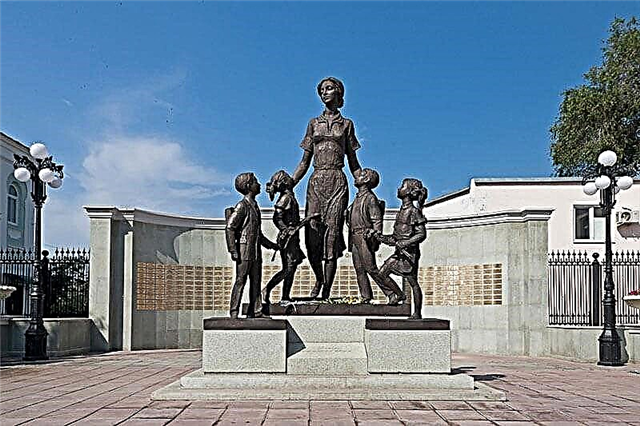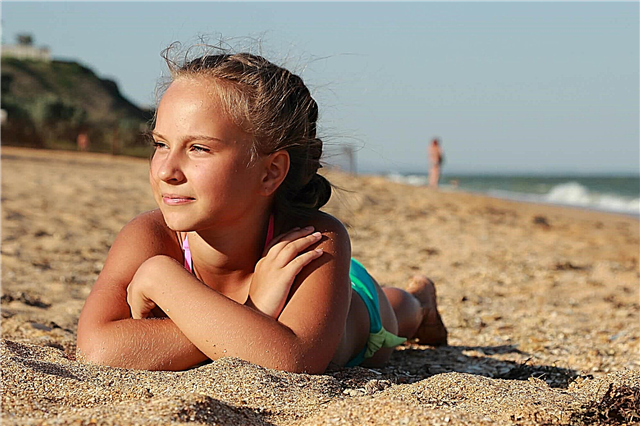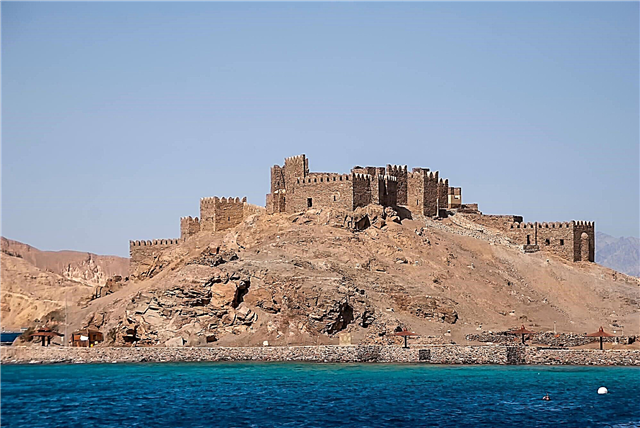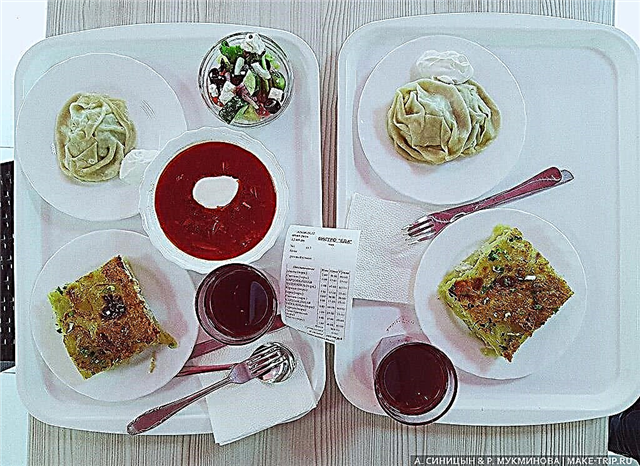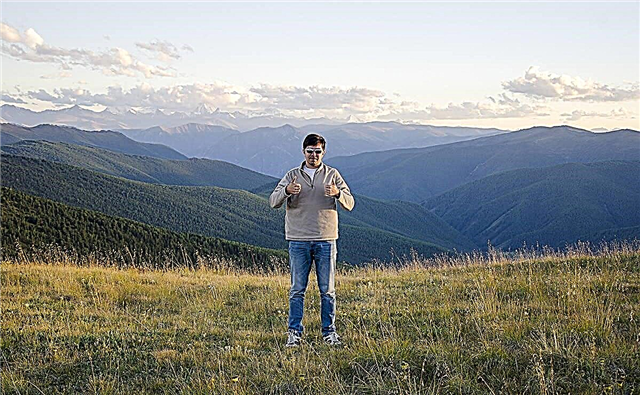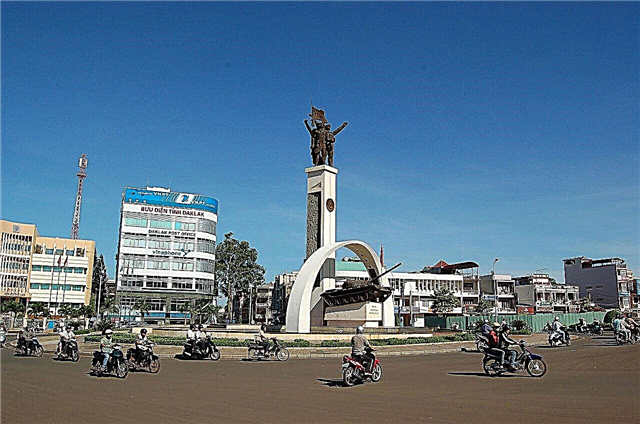The largest city in Vietnam is Ho Chi Minh City, formerly known as Saigon. The capital of the country, Hanoi, has an honorable second place in terms of population with almost 8 million inhabitants. And in the smallest city on the list, there are not even 75 thousand people. The peculiarity of the cities of Vietnam is the fusion of the surrounding villages with the urban outskirts.
The traditional occupations of the population are fishing and growing rice. Methods of extraction and processing of minerals are mainly used outdated, which negatively affects the environment. There are many big holidays in the country, often "tied" to pagodas and temples. There are excellent resorts on the coast with clean beaches and developed infrastructure, for example, Danang, Phan Thiet or Nha Trang.
The largest cities in Vietnam
List of the largest cities in terms of population in the country.
Ho Chi Minh City
The former name, Saigon, remained in common use. The influx of investments has led to a change in the city's appearance: in half a century, skyscrapers have grown here, modern exhibition halls, clubs, places for entertainment have appeared, the headquarters of large companies have opened. Temple of the Jade Emperor, Cathedral of Our Lady of Saigon, pagodas - places where tourists gather. And in the vicinity, there are holes from the times of the Vietnam War.
Population - 10 380 000 people (2016).
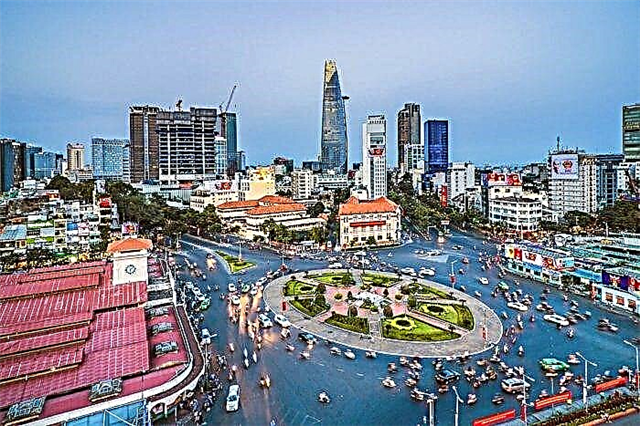
Hanoi
The capital of Vietnam stands on the banks of the Hongha River. The streets of the Old Quarter are named after the goods that were sold here in the past: for example, Sugar or Shoe. Lake of the Returned Sword is famous for the Turtle Temple and theatrical performances. Other points of interest: Presidential Palace, Hoalo Prison Museum, Citadel, Ho Chi Minh Mausoleum. In 2008, the surrounding territories were annexed to the city, increasing its area almost 3 times.
Population - 7 785 000 people (2016).

Haiphong
Seaport in the north of the country. A third of the territory is agricultural land. Most of them are allocated for rice fields. In the center of Haiphong there are monuments of colonial architecture, an opera house, Du Hang Pagoda, pedestrian boulevards, restaurants and cafes. The city has long become a staging post for travelers heading to Cat Ba Island.
Population - 2 190 788 people (2016).

Can Tho
The largest of the cities in the Mekong Delta. Agricultural suburbs have already become densely intertwined with urban areas. There is an international airport nearby. The unique objects of Can Tho are floating markets: sales and purchases are made directly from the boats. Bird gardens are no less amazing. Until 2010, crossing from Can Tho was possible only by ferries. The modern bridge is now open.
Population - 1 237 300 people (2014).

Da Nang
One of the popular resorts in Vietnam, as well as a port on the shores of the South China Sea. The city and beach areas of the city are separated by the Han River. Due to this, the resort area is usually quiet, and the rest is characterized by a measured way. Reserve Marble Mountains - the main natural attraction of the area. The world's longest cable car was opened near Da Nang.
Population - 1 230 847 people (2019).
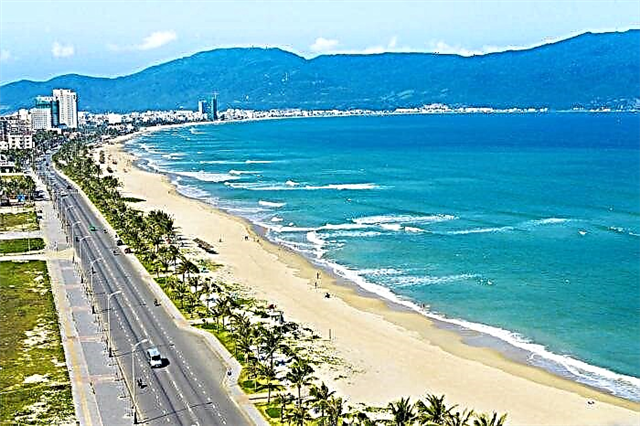
Bien hoa
The satellite city of Ho Chi Minh City serves as an industrial center. The tourism industry is strengthening its position in Bien Hoa every year. The Buu Fong Pagoda, built in 1676, houses a museum. The long lake was created by people, there is a park around it, and a part of it is an orchid garden. Excursions often include visits to Boo Long Mountain and the Dragon's Head Grotto, which is located here at the base.
Population - 1,104,000 people (2015).

Thanh Hoa
The city was completely rebuilt after the Vietnam War, as it was severely damaged. Sightseeing: monument to General Le Loy, Museum of Antiquities, Catholic Cathedral. In the Thanh Hoa region, there is the Dragon's Mouth Bridge - perhaps the most famous in the country. It is of strategic importance, therefore it was repeatedly attacked, went through restoration and was re-commissioned.
Population - 614 500 people (2018).

Hai Duong
The translation of the name is “ocean”. The Thaibin river bed divides the city into two sectors. The first includes residential areas, shops, places for leisure and entertainment. The second is agricultural land and an industrial zone. The most significant sights of the area: Giam Temple and its frescoes, Tach Hoi hot spring, which has medicinal properties, Halong Bay.
Population - 507 469 people (2019).

Vinh
During its existence, it has changed many names. The present was appropriated to the city under the influence of Europeans. In 1975, the Ho Chi Minh mausoleum was opened. The city museum has an exposition dedicated to Lenin. The trees in some parks are over 100 years old. Tourists often plan trips to Vinh to catch the big festivities at Hong Son Temple.
Population - 490,000 people (2015).

Dalat
Unofficially, the city is called "Little Paris". It was built by the French and has a small copy of the Eiffel Tower behind the central market. Dalat has long been a high-mountain resort. Natural parks, Flower Garden, Xuan Huong Lake, an imperial residence with a preserved interior, Hang Nga Guest House, a cathedral are just a few of the interesting city sites.
Population - 406 105 people (2015).

Nha Trang
One of the leaders among the cities of Vietnam in terms of the number of tourists. There is a conditional division into three large areas: business, tourist and industrial. The beaches are mostly public. The symbol of Nha Trang is the Ponagar cham towers dating from the 13th century. Behind Long Son Pagoda there is a huge statue of a snow-white Buddha. Salt fields, waterfalls, Honteong stones are the most interesting objects in the area.
Population - 392,279 people (2015).

Nam Dinh
The capital of the province of the same name. Hanoi is about 90 kilometers from here. In honor of Jang Hung Dao, a festival is held in August. The monument to this national hero is one of the most beautiful in the city. Keo and Ko Loa Pagodas are also famous for their festive events. In the first, they are dedicated to Duong Hong Lo - a fisherman who was allegedly also a sorcerer. In the second, the five elements of life.
Population - 352 108 people (2015).
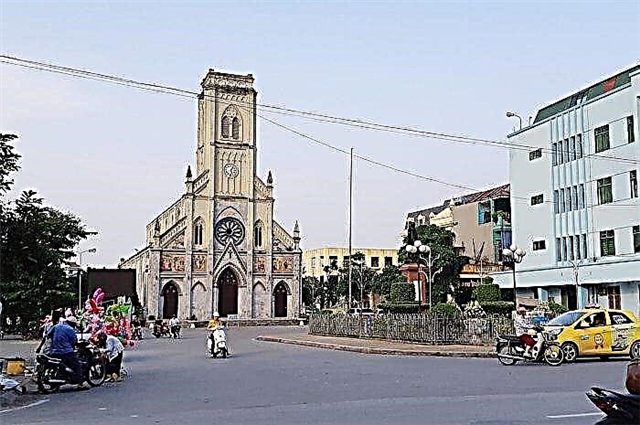
Buon Ma Thuot
The city is often called the capital of the Thuongs - the indigenous peoples of these lands or the "coffee capital" of Vietnam. The surroundings are occupied by coffee and tea plantations stretching for tens of kilometers. Colonial architecture has survived, contrasting with traditional buildings. Tourists come to Buon Ma Thuot, among other things, for unconventional treatments.
Population - 340,000 people (2015).

Phan Thiet
A beach resort stretching over 40 kilometers along the coast of the South China Sea. The surrounding villages have become suburban areas of Phan Thiet, where visitors often stay. The tourist season lasts all year round. Significant objects: Cham towers, Wan Tui Tu temple, located in the vicinity of Mount Taku, which can be reached by funicular.
Population - 335,212 people (2015).

Hue
Capital of Vietnam during the reign of the Nguyen Dynasty. Since those times, palaces and mausoleums have been preserved, restored and receiving tourists all year round. On one side of the city is the Truong Son Mountain, on the other - the coast of the South China Sea. Sightseeing: Thanyeoan Tile Bridge, Tiger Manege, Pagodas, Fuqam Cathedral. More than 300 city sites are included in the UNESCO World Heritage List.
Population - 333 715 people (2015).

Vung Tau
A city in the southern part of Vietnam, famous for its resort area. It was formed by the partial merger of Vung Tau with the Longhai settlement. The surroundings are rich in observation decks. Near one of them there is a 32-meter statue of Christ, reminiscent of a similar landmark in Rio de Janeiro. The Binh Tau health resort is located 30 kilometers from the city.
Population - 327,000 people (2016).

Thaingguyen
The administrative center of the province of the same name. In 1960, a museum dedicated to the country's national minorities was opened in the city. Among the monuments of Thaingguen, the sculpture of a teapot stands out at the office of the tea company. On the outskirts, there are still active ancient monasteries. A road has been laid to the national park located in the mountains.
Population - 317 580 people (2016).

Quynnon
A resort town in central Vietnam. Some time ago, the economy of the area was based on agriculture and fishing, now there has been a shift towards tourism. Holidays in Quynnon are measured and suitable for beach lovers, leisurely walks in the surrounding area or boating along the coast. Sightseeing: traditional Cham towers, Tyaban fortress, Teishon temple.
Population - 311,000 people (2015).
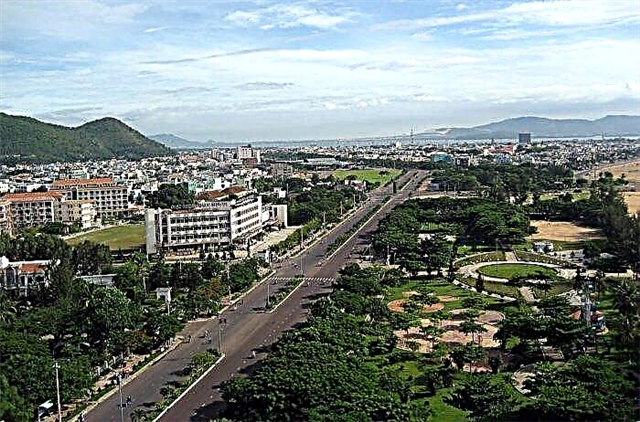
Longsuen
From this Vietnamese city to Cambodia only 45 kilometers. In the south-west of the country, Longsuen is the second in terms of living standards. One of the educational centers of the region. Anziang University is especially prestigious. Catholic churches are adjacent to the Ba Tua Su temple. An annual religious festival is held on Mount Sem, attracting both pilgrims and tourists.
Population - 278 658 people (2017).

Ratzya
It is located on the coast of the Gulf of Thailand. In 2005 it became a provincial city. There are several picturesque beaches within Rach Gia. There are schools for divers and windsurfers. You can go to sea in the company of fishermen-instructors who rent out the necessary equipment for any type of permitted fishing. Religious sites - Catholic temple, Fo-Minh and Fat-Lon pagodas, Buddhist temple Nguyen-Chung-Chuk.
Population - 250 660 people (2015).

Thuzaumot
Bordered by agricultural areas of Ho Chi Minh City. The local market is famous for its size and the time of its foundation: fish and rice were traded here since the Middle Ages. In Thuzaumot, buildings from the period of the Chan dynasty are preserved. The facades of the wooden buildings are decorated with carvings typical of the region. There is a large Dainam amusement park.
Population - 187,379 people (2019).

Bakzyang
Located in the north-east of the country. The city is "sandwiched" between the agglomerations of Haiphong and Hanoi, and the capital is only 50 kilometers from here. Urban areas are characterized by low modern buildings. The main attractions are Buddhist temples and the Huang Van Thu industrial park, which occupies an impressive area. Suoimo thermal springs are located not far from Bakzyang.
Population - 180,000 people (2015).

Camph
A port city in the Quang Ninh province. The population is mostly employed in the coal mining industry. A large cement plant is in operation. Environmentalists and UNESCO are closely monitoring pollution and deforestation in the area. The main attraction of Kampha - Denkuaong Temple - attracts tourists at the beginning of the lunar year by holding a festival.
Population - 168 196 people (2019).
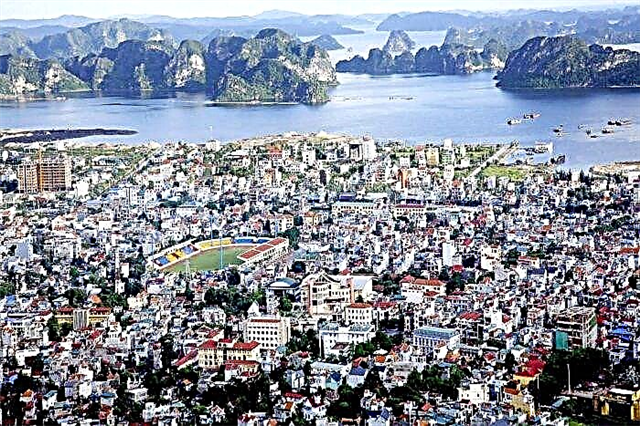
Phanrang Thaptam
A city in the southern part of the country. Located on the Kai River, which flows into the gulf of the South China Sea. The traditions and cultures of the region are associated with the Cham people. The main monument of the city is the monument in the Park on April 16. In the vicinity of Phanrang Thaptam, there is an architectural complex with towers, walls and a sanctuary. It has undergone partial reconstruction in the 21st century.
Population - 152,906 people (2019).

Mitho
Occupies the fertile lands of the Mekong Delta. The strategic position of Mitho is due to the proximity of Ho Chi Minh City, as well as the main water and transport arteries of the country. In the center of the city there is a monument to Nguyen Huu Huang. Tourists come for the typical Vietnamese flavor, often taking boat excursions, as well as exploring the snake farm, Hao Dai Temple and nearby small islands.
Population - 130,081 people (2019).

Kamau
Center of the province of the same name. An important transport hub of the country. Kamau includes both urban and agricultural areas. The city is the largest shrimp exporter in Vietnam. There are several bird sanctuaries in the vicinity. The birds were initially attracted by mangrove forests and abundant vegetation, including rare species of flora.
Population - 129 896 people (2019).

Tuyhoa
It stands at the confluence of the Darang River into the South China Sea. The population is employed in rice cultivation, fishing and services. The symbol of the city is the Nyan Cham Tower, built on the top of the mountain. Other attractions: Mang Lang Church of the late 19th century, Bai Mon beach, prominent in the sea, lighthouse. In the south of Tuyjoa, there is a floating gypsy village that attracts tourists.
Population - 122 838 people (2019).
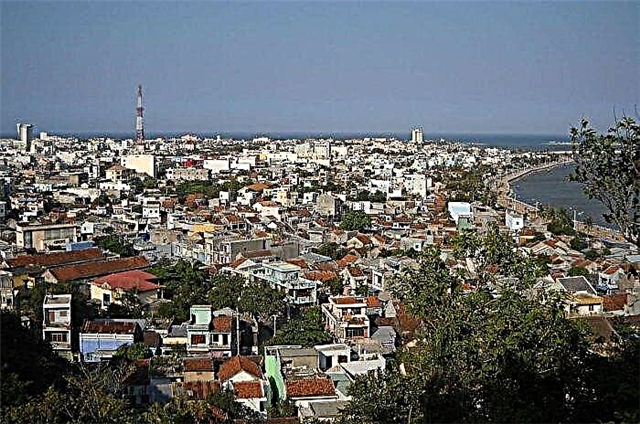
Tanan
Located on the coast of the Kotai River. It is the capital of Longan Province. The villages on the outskirts have practically merged with the city blocks. Interesting places to visit are Central Park, Zyu Quang Pagoda, Phu Mia Monument, History Museum, Tu Khoa Huang Temple. In the east of the province, the remains of the structures of the ancient Khmer civilization Oc Eo have been preserved.
Population - 98,157 people (2019).

Kaolan
The capital of the province is Dongthap. The local museum contains exhibits that tell about the peasant and fishing traditions of the region. The main monument is the memorial to the fallen Viet Cong soldiers. Tourist routes to other parts of Vietnam run through the city. Not far from Kaolan is the grave of Ho Chi Minh's father. To the north lies the Tamnong Bird Sanctuary.
Population - 91,218 people (2019).

Wongby
Located near the northern border of Vietnam. The economy relies heavily on the extractive industry, whose methods are outdated. This negatively affects the ecological situation in the city. Yenty Nature Reserve is located near Wongby. Several temples were built on the mountain of the same name, which surrounded the Sacred Grove. Spring in the area is a time for festivals.
Population - 74 678 people (2019).



